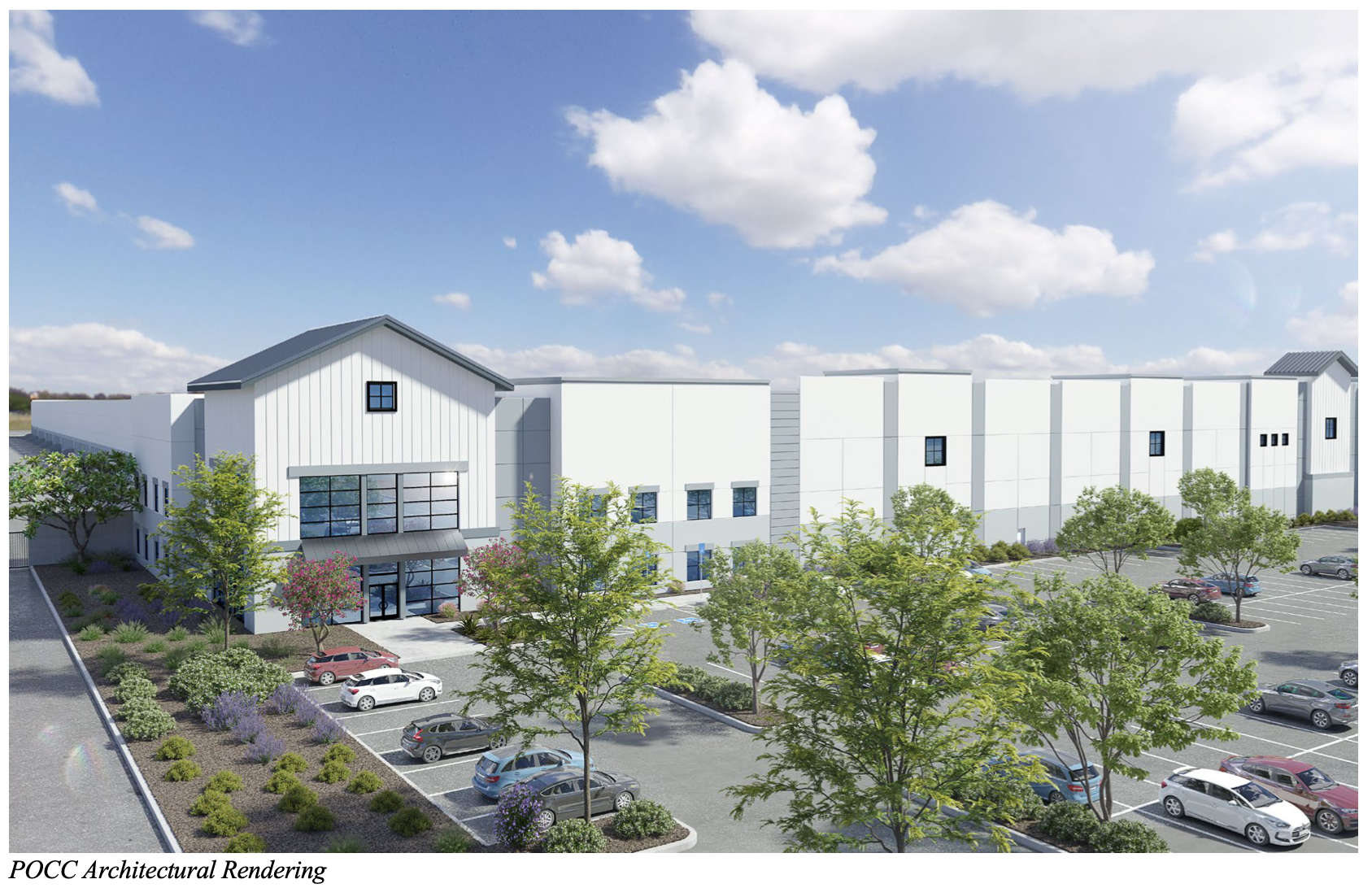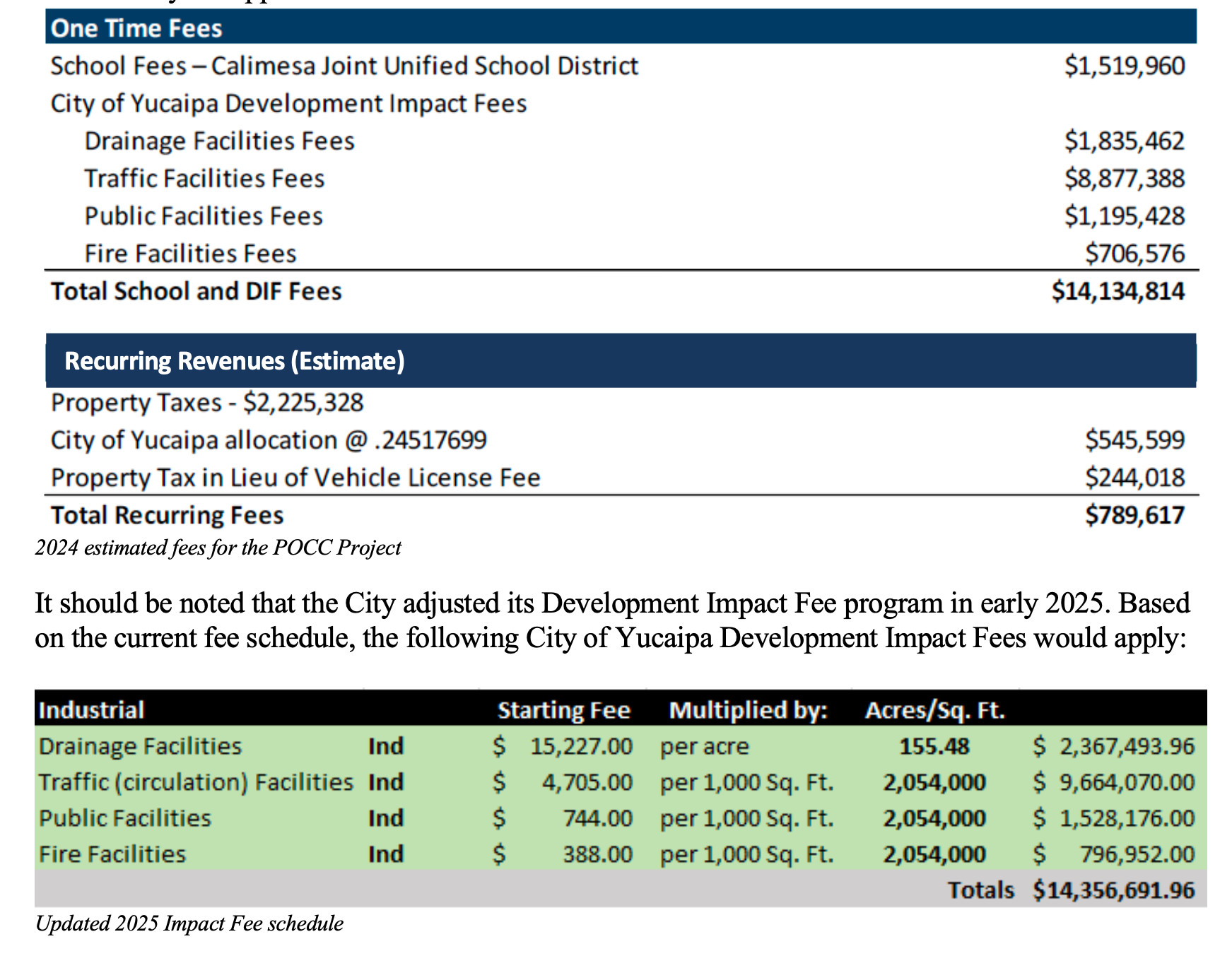Dangermonds take ownership of Redlands Mall, aim to improve long-stalled site
Local business owners step in after out-of-town developers face foreclosure, struggle to move project forward
In a 4-1 vote, council members backed the Live Oak Canyon development as a long-term investment in the city’s future. Supporters framed the warehouse as a “legacy” project, contrasting it with short-term gains like a new grocery store. Opposition questioned transparency, environmental impacts.

YUCAIPA, Calif. — After stalling last August and amid ongoing public opposition, the Yucaipa City Council voted 4-1 Monday to approve a controversial update to the Freeway Corridor Specific Plan.
Why it matters: The approvals clear the way for the Pacific Oaks Commerce Center, a two-building warehouse and office complex totaling more than 2 million square feet at the mouth of Live Oak Canyon.
Details: The council’s 4-1 vote certifies a revised environmental report, adopts new land-use policies for the 1,242-acre corridor along Interstate 10, and approves a conditional use permit for the 2 million-square-foot warehouse project.
The update increases allowable business park uses by nearly 2.8 million square feet while reducing regional commercial space by about 2.3 million square feet. It also adds 25 housing units, bringing the total permitted to 2,472.
One key change in the updated plan shifts some project reviews from public hearings to administrative approvals. Under the new rules, certain applications — such as tract maps for up to 150 homes, R-24 housing projects, minor variances and modifications to previously approved plans — can be approved directly by the city’s Community Development Director rather than the Planning Commission or City Council.
Administrative use permits and sign programs also fall under staff authority, though decisions may be appealed to the Planning Commission.
Mayor Jon Thorp and Councilmembers Justin Beaver, Bob Miller and Judy Woolsey voted in favor, while Mayor Pro Tem Chris Venable cast the lone dissent.
Because the update includes a zoning change, the ordinance must return for a second reading; if the council fails to adopt it at the second vote, the project cannot proceed.
At the center of the debate was the Pacific Oaks Commerce Center. The distribution complex will consist of two tilt-up concrete warehouse buildings totaling more than 2 million square feet. Building 1 is designed for 1,032,500 square feet of warehouse space and 20,000 square feet of office use, while Building 2 includes 981,500 square feet of warehouse and 20,000 square feet of office space. Both buildings allow up to 25 percent of their floor area for cold-storage uses.
The site plan calls for 356 truck docking bays, 1,058 truck parking stalls and 986 passenger vehicle spaces, with additional overflow capacity for 322 more truck stalls.
To reduce its visual footprint, the project leverages hillside grading to shield the buildings from view along Interstate 10, and architectural detailing includes craftsman-inspired elements and drought-tolerant landscaping.

Economic impact: City staff estimate the project will generate more than $14 million in one-time development impact fees to fund infrastructure and public safety needs. Once operational, the center is expected to deliver recurring revenue streams for Yucaipa through property taxes, ongoing community facilities district assessments and other fees.
The developer is also required to invest more than $35 million in infrastructure improvements, including road upgrades, utility extensions and water pipelines serving the broader corridor.

Environmental impact: A Subsequent Environmental Impact Report found most impacts could be reduced through mitigation, but concluded the project will still have significant and unavoidable effects on air quality, greenhouse gas emissions and noise. To approve the update, the council adopted a “statement of overriding considerations,” acknowledging the trade-offs but citing the long-term economic benefits.
The SEIR examined potential impacts in the following areas:
City staff noted that while traffic congestion is not considered an environmental impact under CEQA, roadway conditions will be addressed through project-level conditions of approval.
Thorp framed the decision as one rooted in the city’s long-term financial health.
“Finances are on our radar right now. Anything that helps level some of those things on our ledger helps,” he said, pointing to the estimated $14 million in development impact fees tied to the project.
Staff confirmed that "a couple million dollars" from the development impact fees would help pay down the city's $20 million of inter-fund loans.
Throp added that Yucaipa cannot afford to let opportunities pass by.
“We’ve been working on this since 2008, and nothing’s really transpired. Right now, what we have in front of us is an opportunity and we should take a hold of it. We keep saying no; eventually, opportunities go away and we’ll be down the road wishing we had done something,” Thorp said.
Miller echoed the urgency, saying the specific plan had been studied and revised for nearly two decades.
“We can’t kick this can down the road anymore,” he said. “Somebody tonight talked about legacy — what our legacy is gonna be. This is our legacy.”
Miller said the warehouse project represents a long-term investment in Yucaipa’s future — unlike recent additions such as the new Trader Joe’s, which he described as “short-term thinking.”
He also emphasized the importance of property rights and the overlay’s flexibility.
“All we’re merely looking at is an overlay. You can do what you want with your property. If you own a piece of property and you want to develop it, bring your plan forward. That’s America — do what you want with your property,” Miller said.
Venable argued the plan was developed around accommodations for the warehouse developments and that the investment in infrastructure is overstated.
He questioned the credibility of the $35 million in infrastructure improvements tied to the project, saying the council had never been provided a detailed breakdown despite repeated requests.
“We deal with budgets and review numbers at almost every meeting, but we have never been provided a breakdown of what that $35 million includes,” he said.
He argued that the improvements described — including 4.3 miles of new water lines and utility work — were framed as citywide benefits but in reality would serve only the warehouses. “The only benefactor of these improvements are the planned warehouse developments,” Venable said, noting that no additional roadway or utility upgrades are planned within the Freeway Corridor to support other property owners.
“We, as a council, and the citizens of Yucaipa have been repeatedly misled by the warehouse developer and the city staff,” Venable said. “Thirty-five million sounds like a big number, but when you divide it out, it’s pennies compared to the cost this community will pay in traffic, pollution and loss of open space.”
City staff, however, said the required $35 million in infrastructure improvements include building a new public roadway and extending Wildwood Canyon Road to the site, intersection upgrades with traffic signals at Live Oak Canyon Road and Outer Highway 10, and reimbursement for the city’s bridge replacement project. The package also requires more than 20,000 feet of new off-site water lines, sewer connections and easements, storm drain and flood control facilities, and upgrades to electrical and telecommunications utilities.
Venable also addressed the update that shifts many project approvals in the corridor to city staff.
“We’re taking decisions that used to be in front of the public and moving them behind the counter,” he said. “That’s not the kind of open government I think our residents expect.”
Residents in Yucaipa and neighboring Redlands strongly opposed the project, with dozens submitting letters and speaking before the city council urging the council to reject what they described as “warehouse sprawl.”
“This will destroy the few remaining open spaces for wildlife and the rural charm of the area,” wrote Debra Vandergoot, who lives near the site.
Others raised health concerns over diesel truck emissions, which opponents said would add thousands of daily trips and worsen pollution in a region already battling poor air quality.
“Our air quality is already poor, adding 1,100 daily diesel truck trips is estimated to increase diesel particulate matter by nearly 30%,” wrote resident Lucinda Brinks.
Some residents called for alternatives such as recreation facilities, vineyards or nature preserves to preserve the canyon’s rural character.
The zoning ordinance will return for a second reading at a future council meeting. If finalized, the Freeway Corridor update and Pacific Oaks Commerce Center would mark one of the largest development projects in Yucaipa in recent years.
Sign up for our weekly newsletter